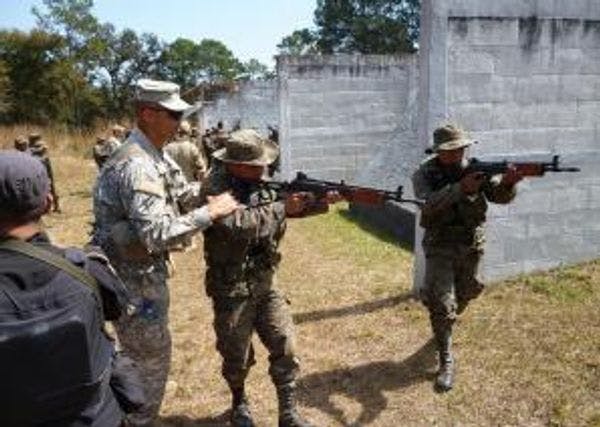Drugs and violence in the Northern Triangle
Iron Fist approaches with an emphasis on arrests and drug interdictions often lead to substantial spikes in violence as the drug trade is disrupted, alliances shift and territorial control is disputed. Undoubtedly, the drug market plays a critical role in the criminal violence in the Northern Triangle. But it should be clear that this role is all too often grossly overestimated, supported by stereotypes and superficial assumptions about causal chains. Prevailing drug trafficking control measures often exacerbate violence levels and, though recognized as such, they are still widely applied. An open debate on alternative approaches to drug trafficking and violence needs to continue, considering and discussing harm reduction strategies on law enforcement.
Both El Salvador and Guatemala have been experiencing higher murder rates than those recorded during the civil wars in these countries, which ended in the mid-1990s. It is, however, Honduras – despite having been spared the kind of bloody civil wars experienced by its neighbours – that currently occupies first place on worldwide homicide rate rankings (see the figure below. For these three countries in particular, but also in the rest of the region, the high number of homicides and violent confrontations of the past decade are related to the settling of scores (ajustes de cuentas) and territorial disputes or rivalry between DTOs. But the high homicide rates are also fuelled by police and military interventions that destabilize DTOs and illicit markets, with increased competition and clashes as a result. Exactly to what extent violence in the Northern Triangle is specifically drug-related is thus unfortunately extremely difficult to determine.
It has been argued, for example, that in Honduras the political struggles following the 2009 coup have resulted in links between law enforcement, security forces, politicians and organized criminals to shift to such an extent that distinguishing between drug violence and politically motivated violence has become next to impossible. 4 Furthermore, the quality of homicide typology data – to the extent that they are available at all – is highly variable, making it difficult to determine the share of reported homicides that is related to organized crime or gangs. By extension, with DTOs being a particular type of criminal organization and gangs becoming increasingly involved in the drug trade, it is even more difficult to obtain reliable statistics on the extent to which homicides in the Northern Triangle are related to drug trafficking.
A remarkable development of relevance in the debate on the relationship between drugs and violence in the Northern Triangle is the diversification of DTO activities, which has increased notably over the last few years. These organizations have found activities such as extortion, human smuggling and trafficking, kidnapping and weapons smuggling to be very profitable, in some cases causing a partial shift away from drug trafficking. Eliminating the illegal drug trade, by regulating the market, or allowing DTOs to traffic drugs through Central America via ‘a corridor’ to the US, one of the original proposals by Pérez Molina, could definitely contribute, but does not offer the panacea the region is looking for in its attempts to counter its high levels of violence. This diversification of DTO activities is an additional argument that should motivate policy-makers to change the prevalent habit of equating – often without question – drug trafficking to high violence rates, and look at underlying historical and socioeconomic variables instead.
Click here to read the full article.
Keep up-to-date with drug policy developments by subscribing to the IDPC Monthly Alert.
